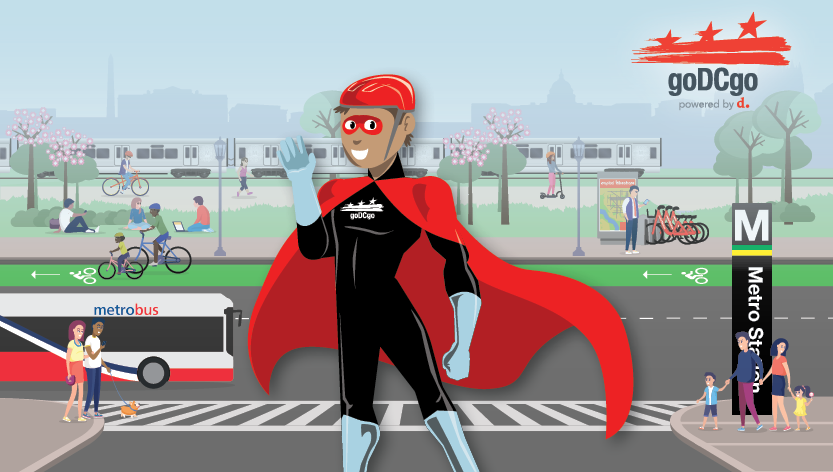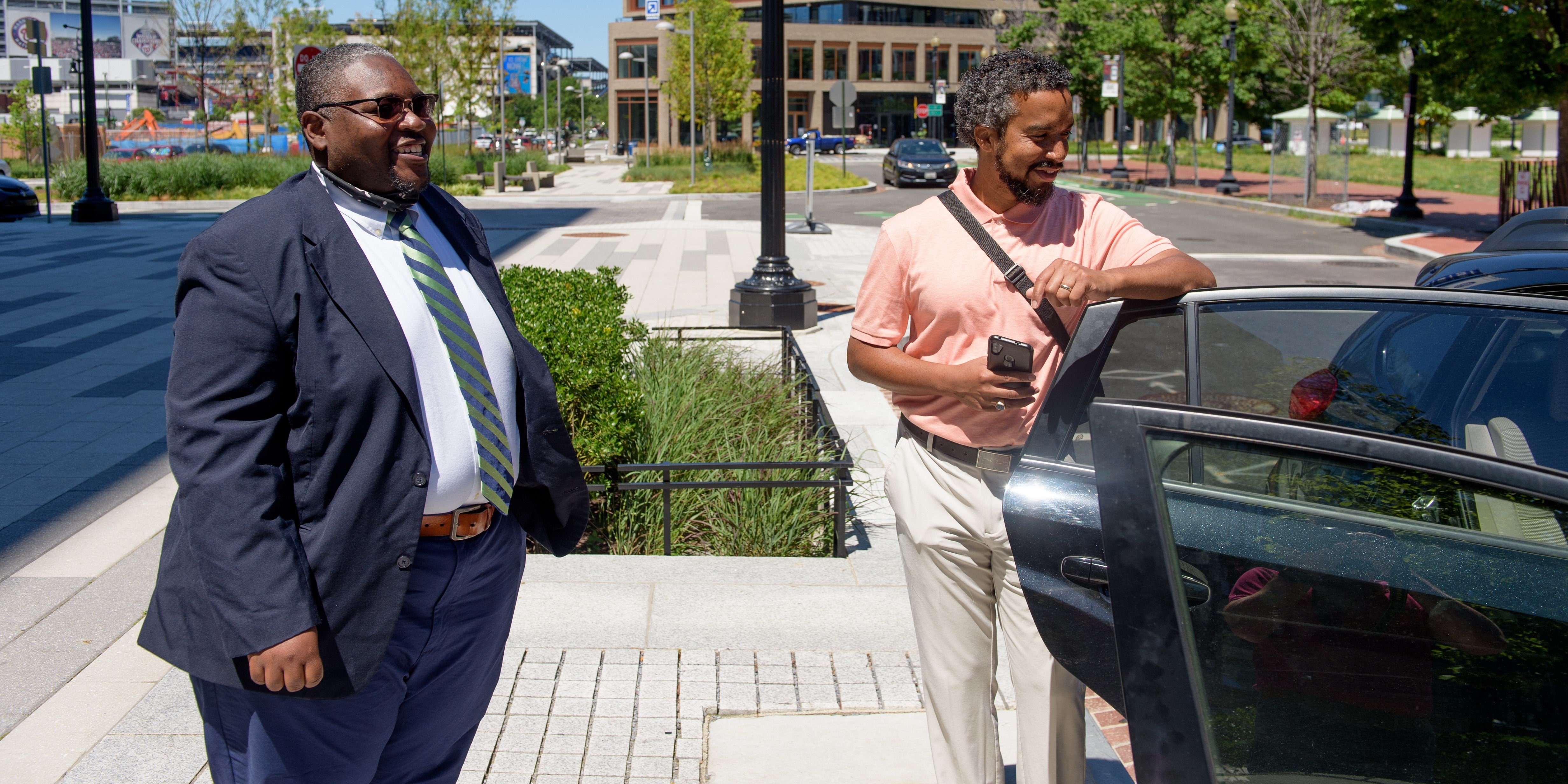January 25, 2024
Commuter’s Guide to Tandem Bicycles
by Necole Jackson
Biking is a wonderful mode of sustainable transportation that offers commuters fresh air and exercise while getting around the District. With over 100 miles of bike lines provided throughout the city, DC is committed more and more every year in getting residents and visitors on two wheels.
While there can be limitations to bike riding, organizations like the Washington Area Bicyclists Association and Metro Association for Blind Athletes (MWABA) are committed to providing resources and options to making this mode of transportation accessible for all. One way they are doing so is with the promotion, education, and community building of tandem bikes. You’ve probably seen tandem bike rides in movies or navigating bike routes throughout the District. In this article, we will provide a beginner’s guide to riding tandem bikes, talk about its benefits, and provide resources for in getting started in your tandem bike journey in DC.
Tandem Bikes Introduction
Tandem features one bicycle designed for two riders. One of the riders control the cycle (captain) and the other provides power (stoker) by peddling. In unison, the riders cycle together, which explains to the saying of riders moving “in tandem”: Even though this may be your first introduction to tandem bikes, they’ve been around for as long as bicycles were introduced. Tandem bicycles come in numerous styles and features to fit the needs of its riders: bikes can come with three or four seats and riders can sit side by side rather than sitting one in front of the other.
How to Ride a Tandem Bike
As previously stated, the captain sits in the front and steers the bicycle, but they further control the bicycle with breaking and shifting gears. The captain serves as stability when not riding putting their feet down to the grown and, in a sense, take on the initiative of being the leader. While the second rider does not have as much leadership as the captain, their role as stoker is equally important as their extra power is what’s needed the move the bicycle.
When riding a tandem bike, it’s important to have an agreed pace and process of riding with the captain and the stoker to make the experience enjoyable and stable. For example, when taking off, both riders need to push down on unison with the same foot. When stopping, same process applies. In situations where the stoker relies on the captain, establishing the process before a ride is crucial.
Accessibility for All with Tandem Bikes
Tandems bicycles, or adaptive cycle, allows for accessibility, especially with District riders. For riders with certain disabilities, tandems mean you do not have to give up or avoid trying cycling. Visually-impaired riders and those with cognitive and balance issues can ride confidently with someone guiding them. With this capability, this allows for everyone to ride two wheels and travel sustainably, whether leisurely or for commuting, throughout the District.
Want to Ride? Learn More!
The MWABA is an organization of blind athletes and their signed peers who believe that recreational and competitive sports opportunities should be open to everyone, regardless of their ability to see. They hold programs for blind and visually impaired youth and adults from DC, Maryland, and Virginia. While they offer numerous activities, they offer tandem bicycle rides with a group of sighted captains and blind stokers on tandem bikes. Tandem bikes and helmets are provided and friends and family on single bikes are encouraged to ride along. If you’re interested in riding, check out their website to learn when they ride, where they take off, and also contact the organization if you want to arrange another ride time.



